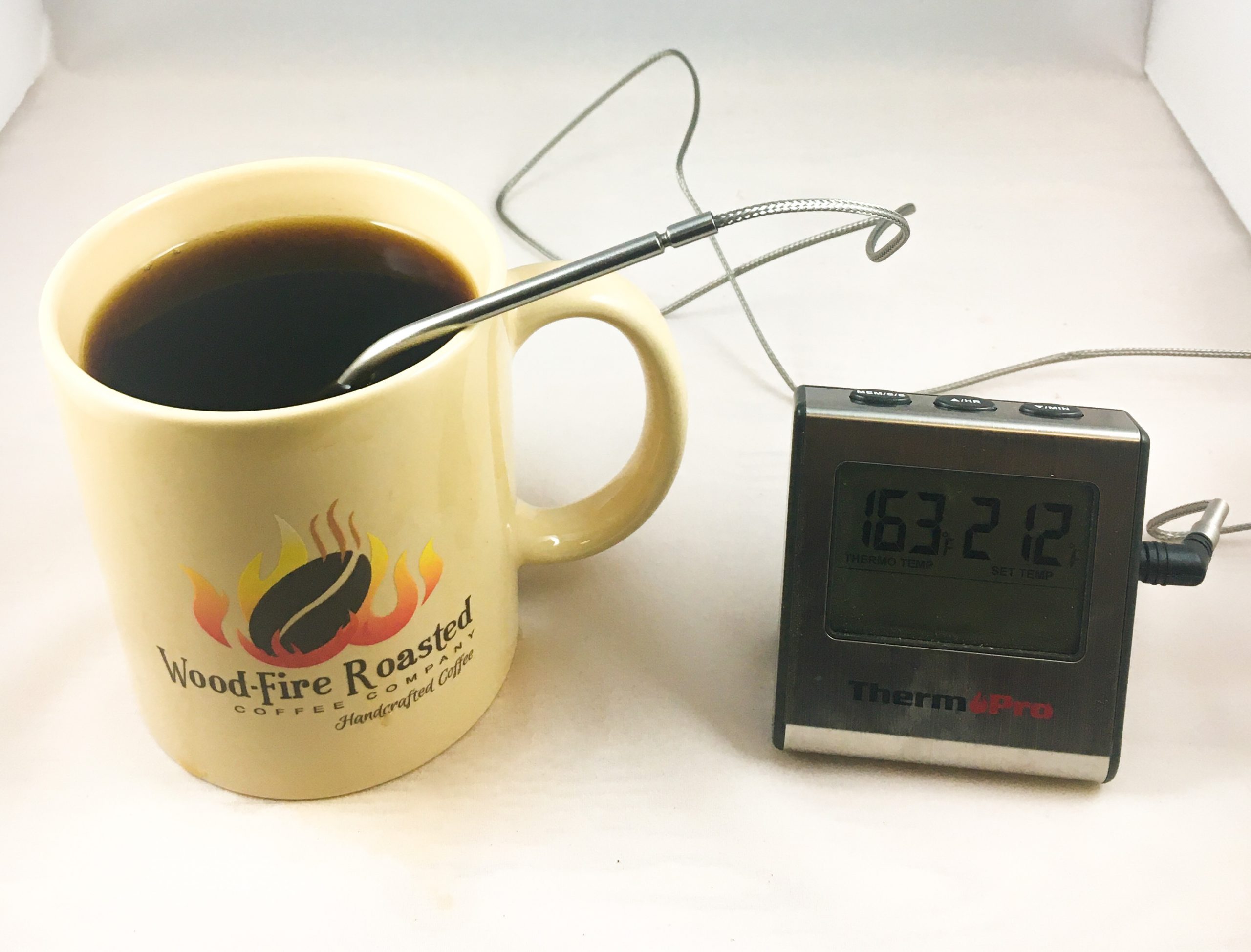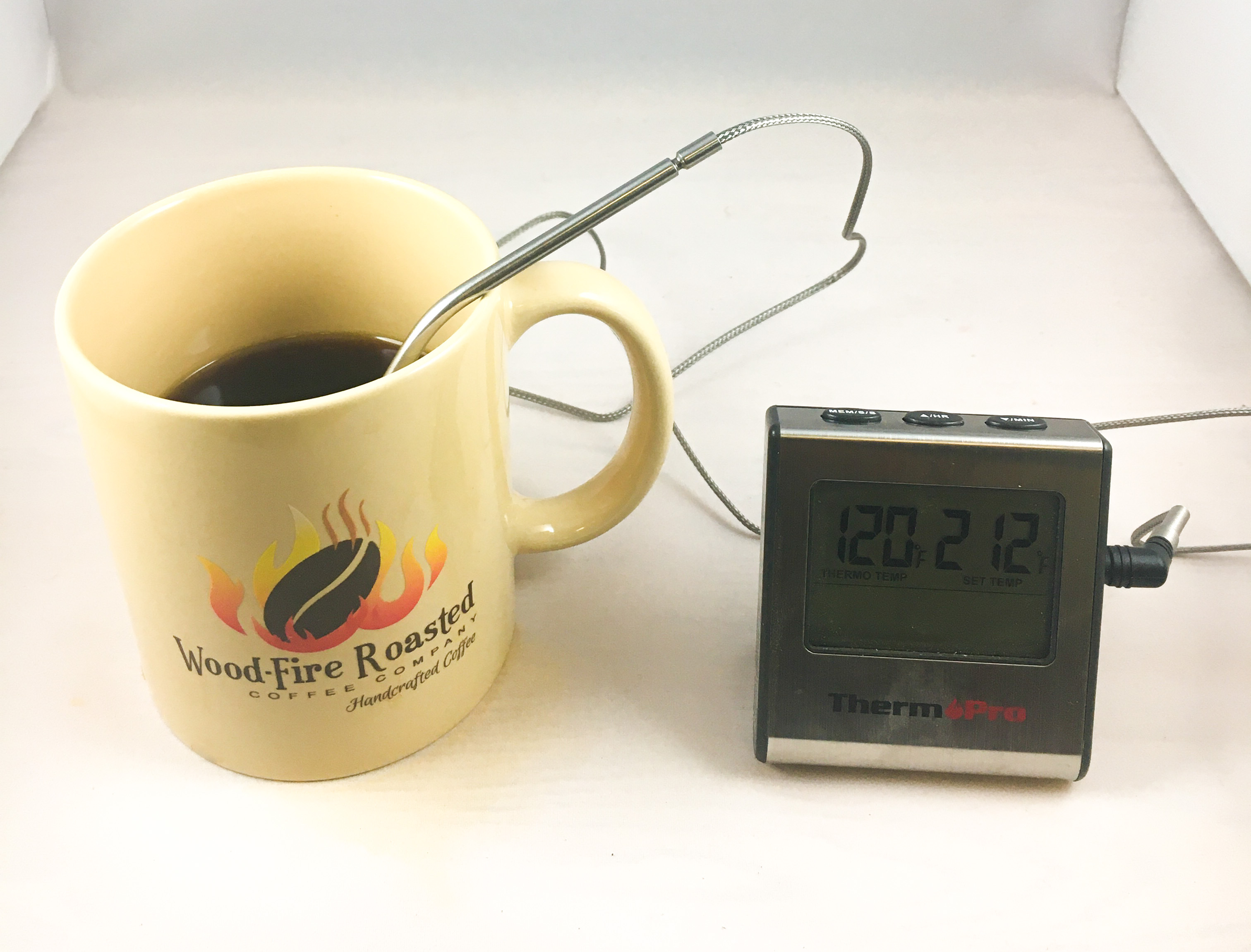Taste-Makers Wood-Fire Roasted Coffee Company
Contributed piece by Natasha Bourlin of Passport & Plume
How do you taste your coffee, and what temperature is optimum?
So, you’ve taken all of the steps to prepare your perfect cup of coffee…now it comes down to how you taste it. Yes, how you taste your coffee is just as important as any other step in the process. And in tasting, the temperature can be a major factor.
Through experimentation and researching the taste sensory operations, experts (you know, scientists and, well, coffee connoisseurs with decades of experience like Wood-Fire Roasted Coffee Co. Owner/Roaster Tim Curry) have determined that the green zone is the ideal temperature zone for drinking your favorite brew.
Why?
We’ll answer that by exploring how we taste and how the brain processes flavor.
Remember the tongue and taste bud lessons we learned and the diagrams we saw while in school?
It turns out that the tongue diagram was just a way of starting a conversation that was never brought to any real conclusion.
“Digging deep into my memory of what I was taught about taste, I remember the picture of the tongue with the four tastes depicted as happening in specific parts of the tongue, such as, sweet at the tip and bitter at the back,” Curry elaborates. “Then there is umami, what exactly is that? I never heard of it until one of my coffees was described with the term in an article. New stuff to learn, yay!”
The aforementioned experts learned that we taste everything throughout our oral cavity, and smell may be one of the most important aspects of taste.
But why do we find some flavors and aromas pleasant and others off-putting?
The answer is quite primal.
A study published by the National Institutes of Health states, “People and other mammals rely on taste to guide food choices. For example, we’re attracted to sweet foods, which are usually rich in energy. A bitter taste, on the other hand, might be a warning sign of potentially harmful chemicals.”
So, how does temperature come into play with how we perceive tastes?
You can do a deep dive into the science of this thanks to articles like this one from the National Center for Biotechnology Information, or from our fellow coffee lovers at Homegrounds.co, but Mr. Curry did his own.
He ran his experiment by first dropping a thermometer probe into his cup, then left it there as he drank his coffee. A simple, direct, and informative approach.
Here is what he found, the total test sample:
The coffee finished brewing at about 160° F.
Drinking the coffee at this temperature resulted in more pronounced bitter tones, less sweetness, and less depth of flavor (as compared to the flavors he would experience as the cup cooled).
As the coffee cooled below 150° F,. sweetness started to become more detectable. Acidity also became more pronounced.
The true flavor explosion began as the temperature dropped below 140° F. 
Sweetness and regional flavor characteristics were at their optimum. Any crisp acid tones were well balanced with the other cup components and the coffee was, in Curry’s opinion, at its best expression.
This held true until the temperature dropped below about 118° F.
At this point, the acidity started to dominate the profile and move toward a less-than-perfectly balanced cup.
He then performed his temperature test on most of the coffees WFRC offers and found that the general guidelines held true. Lower acid coffee still had an increase in perceived acidity as the cup cooled, and coffees that are roasted darker, which tend to be more bitter, mellowed as the sweetness became more perceptible and the coffee moved from 160° down to 140°.
Owner/ Roaster Curry has always referred to the “life of the cup”, and this is what he means.
Coffee changes as it cools. That is a simple and direct way of saying our perception of coffee changes as it proceeds through its life cycle.
How you can do your own test:
• You will need a digital probe thermometer.
• Brew your coffee
• Place the probe into your cup and note the starting temperature
• Sip the coffee (careful it’s hot) and note what you taste, anything you can think of, the more the better.
• Just enjoy your coffee normally with the thermometer in it and make notes of temperature and flavor.
Your taste buds are different from his, so don’t allow his observations to affect your experiment.
Enjoy your coffee!


